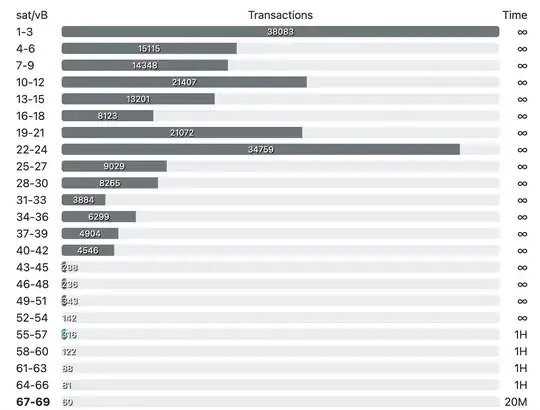Right now on https://bitcoinfees.net , it is showing the following chart:
So it is show 55 - 57 sat / vB is needed for the transfer to take place in about an hour.
How do we interpret this chart? For example, what if it is a one person to one person transfer, then what will the fees be?
Or if it is from 2 wallets transferring to 400 wallets, then what will the fees be per wallet (for the 400 wallets, assuming they divide up the fees equally per wallet. So one wallet can be receiving US$10 worth of BTC, while another one can be receiving US$400 of it). (this is a scenario how the mining pool pays out to their miners).


